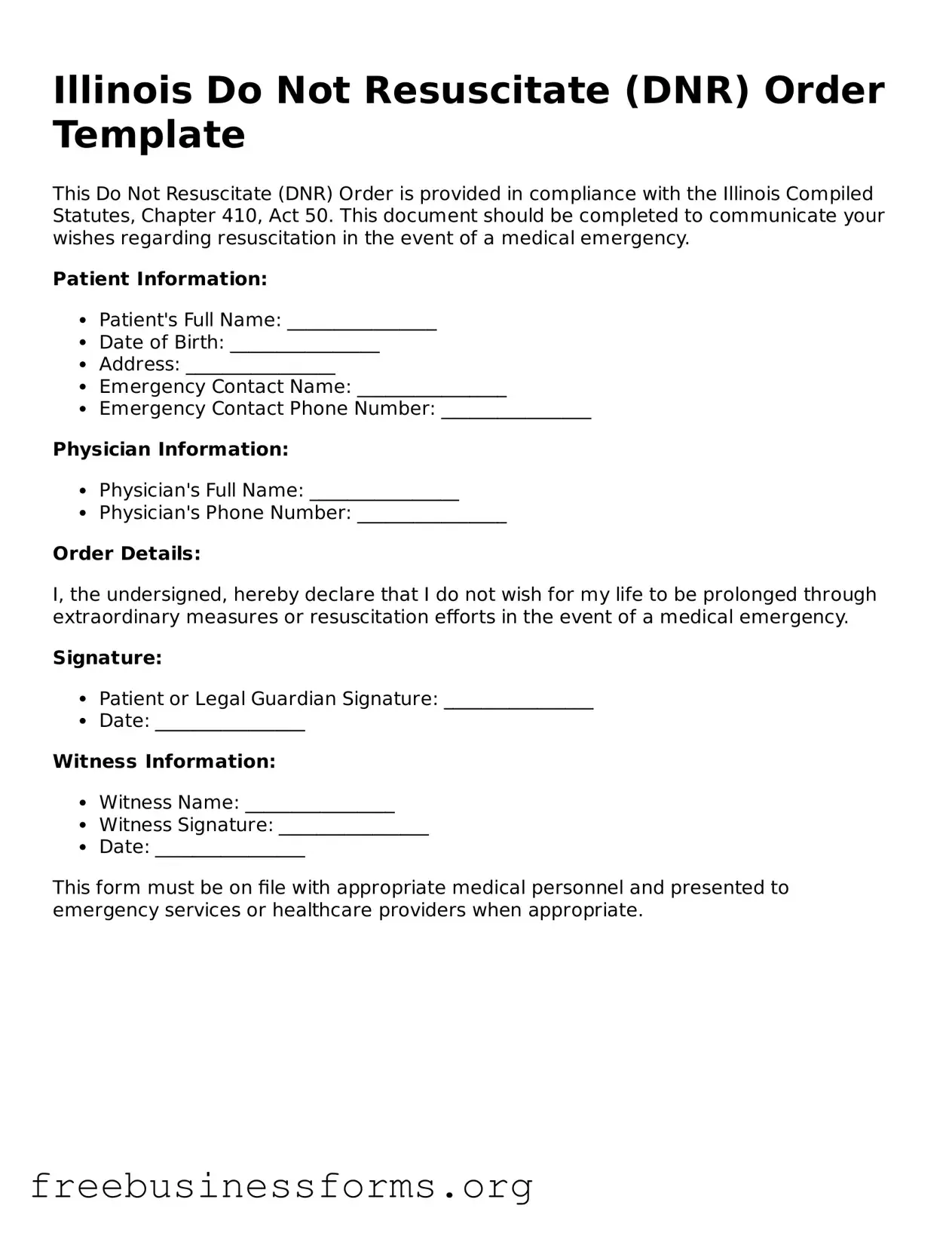Illinois Do Not Resuscitate (DNR) Order Template
This Do Not Resuscitate (DNR) Order is provided in compliance with the Illinois Compiled Statutes, Chapter 410, Act 50. This document should be completed to communicate your wishes regarding resuscitation in the event of a medical emergency.
Patient Information:
- Patient's Full Name: ________________
- Date of Birth: ________________
- Address: ________________
- Emergency Contact Name: ________________
- Emergency Contact Phone Number: ________________
Physician Information:
- Physician's Full Name: ________________
- Physician's Phone Number: ________________
Order Details:
I, the undersigned, hereby declare that I do not wish for my life to be prolonged through extraordinary measures or resuscitation efforts in the event of a medical emergency.
Signature:
- Patient or Legal Guardian Signature: ________________
- Date: ________________
Witness Information:
- Witness Name: ________________
- Witness Signature: ________________
- Date: ________________
This form must be on file with appropriate medical personnel and presented to emergency services or healthcare providers when appropriate.
